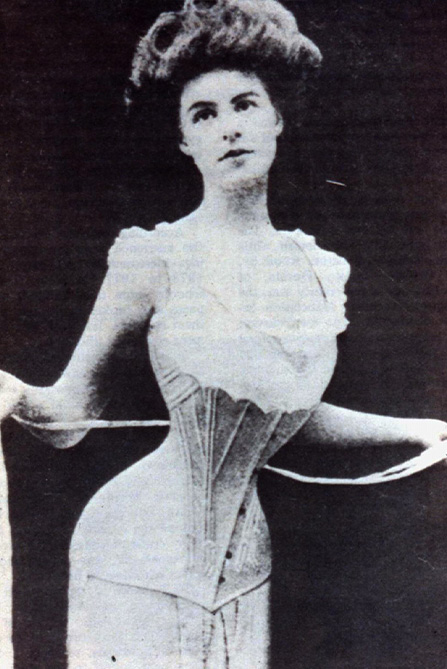In 1938, a woman was arrested for a terrible crime. What did she do?
She wore pants.
Helen Hulick, a Los Angeles elementary school teacher, was one of many women unfairly oppressed by fashion, something that was a common tale throughout history.
Luckily, we've made significant progress since then. But, the question of fashion as an oppressive or liberating force continues today. Only this time, it's harder for us to see.
In an industry fraught with ethical dilemmas that employs many women in low-income countries, fashion oppresses those who make our clothing. Yet, it also holds the potential to be a catalyst for liberation towards a more ethical and sustainable future.
How can we make this transition a reality?
From Whalebones to Bloomers: Oppressive and Liberating Garments
Throughout history, women have been confined by clothing styles dictated by societal norms.
Corsets, for example, were garments worn throughout history that were extremely restrictive and unhealthy for women. Materials including whale bone, steel, and tightly woven cotton were all used to force a woman's shape into the on-trend silhouette. Not only did these garments restrict women's ability to move, they also damaged their organs as their bodies were tightly bound.
In the early 1900s, women started to push back against this sartorial oppression they'd faced for centuries.
The 1920's saw the women's liberation movement flourish, with fashion serving as a visible expression of support for women's rights. Women donned bloomer pants in defiance, utilizing fashion as a means to advocate for change.
And, it worked. Throughout the 20th century, significant strides were made for women's rights. Pushing to wear pants was one small step that served as a catalyst for many important changes.
Today's Battle: Woven Beneath the Surface
Did you know that 60-80% of global garment workers are women and that only 2% of garment workers receive living wages?
While women today are not likely to be arrested for wearing pants, this injustice within fashion manufacturing holds women down still today.
The financial issues aren't the only ones, either. Unsafe working conditions are commonplace in clothing production. Many of these garment workers experience gender-based discrimination, like being fired for being pregnant or experiencing harassment at work.
Positive Changes
While worker exploitation and unfair wages are prevalent issues in many low-income countries around the world, fashion is being leveraged to raise awareness and incite change.
Organizations like The Fashion Revolution and Collective Fashion Justice are increasing awareness of these issues through campaigns that advocate for ethical production practices.
Whether you're a fashionista or not, if you wear clothing, you're impacted by this industry. Because of this, fashion has a unique opportunity to help us see behind the unjust curtain of worker exploitation and begin to consciously change our ways.
A Kinder World Is a Cleaner World
Ethical concerns in fashion have environmental implications as well. Fashion contributes 2-8% of total greenhouse gas emissions, is responsible for large-scale water pollution, and generates excessive waste.
However, not all clothing is created equal. Fast fashion, which prioritizes making clothing cheap and quick above all else, is where worker exploitation is most common. It also contributes the most to these environmental woes.
So, as these ethical and sustainable concerns are intertwined, promoting an ethical fashion industry means creating a cleaner planet as well.
How We Can Help Create a Better Fashion Future
Avoiding fast fashion, which perpetuates many ethical issues, is a crucial step. Though one of the best ways is to simply reduce how often you buy new clothes, there are ways we can choose to support ethical fashion alternatives when we do find ourselves in need of a new piece. Here are four ways to keep in mind.
1. Ensure transparency in your clothing choices:
Recognizing the origins of your clothes is crucial for making ethical decisions. Use resources like Good On You, an organization that brings light to brands' ethical and environmental practices, to trace the origins of your clothing and find better companies to support.
2. Support small-scale artisans and local designers:
Small-scale designers and artisans are closer to their supply chains and often involved in making the clothes. There are many ways to support small-scale designers, which comes with a lower environmental footprint and will also uplift your local community.
3. Seek out Fair Trade and Bluesign-certified products:
Prioritize brands that uphold ethical standards, such as fair wages and safe working conditions. Look for certifications like Fair Trade and Bluesign to ensure your purchases align with your values, which are only given to brands that abide by these principles.
4. Advocate for legislation that opposes fast fashion practices:
Support laws that enforce ethical and sustainable standards in the industry. Support regulations for transparent supply chains, fair wages, safe working conditions, and environmental protection. This advocacy can drive positive change for workers and the planet.
Fashion touches us all, and its impacts reach beyond what meets the eye. Though fashion can be a form of self-expression and a tool for societal liberation, it can also oppress those working behind the scenes.
By supporting ethical fashion brands and practices, we can pave the way for a better future for the women making our clothing, and create a safer and cleaner planet along the way.
Guest blog written by Jackie Warehime
Jackie Warehime is a New York-based designer and sustainability advocate with a background in product design. She writes about sustainable design at www.jackiewarehime.com, with the goal of exploring and expanding the ethical and sustainable approaches to crafting the world we live in.
Header Image from Wikimedia Commons



